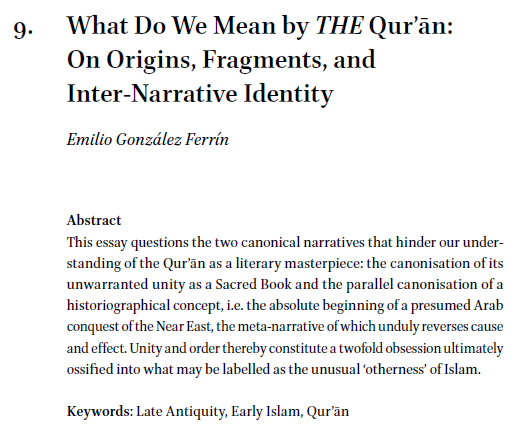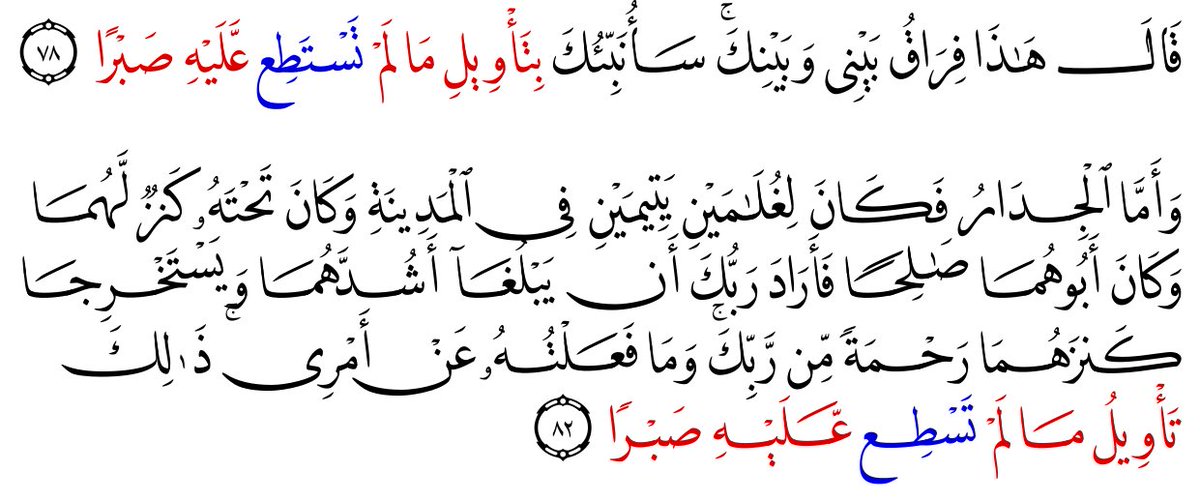
One of the interesting, but seldom described features of Classical Arabic (i.e. "that which the grammarians describe") is the presence of a front rounded vowel ǖ [yː]. This is said to occur in some dialects in the passives of hollow verbs, e.g. qǖla 'it is said' instead of qīla. 

Early descriptions mention this use for underived hollow roots, and it can be seen as the outcome of a Proto-Arabic *uwi which collapsed, not to /ī/, as becomes the standard, but to /ǖ/. Originally then hollow roots had the standard passive pattern *quwila. 



As mentioned by al-Farrāʾ (first picture previous tweet), al-Kisāʾī would make ample use of this in recitation. In fact, he regularly does it for every single passive underived hollow verb. Several other readers use it too, but for them the pattern is less regular. 

But if indeed the /ǖ/stems from the sequence *uwi, logically we would expect derived stems to undergo the same shift. After all the passive of ixtalafa is uxtulifa, so the passive of ixtāra should be from *uxtuwira > uxtǖra.
Sībawayh and al-Farrāʾ make no mention of this.
Sībawayh and al-Farrāʾ make no mention of this.
But al-Zamaḫšarī is explicit on this topic, and indeed reports it! I translate it here: "And you say for the passive qīla "it is said" and bīʿa "it is sold" with kasr; or qǖla and bǖʿa with ʾišmām or qūla and būʿa with wāw. ..." 

"And it is the same for (derived stems like) uxtǖra "it is chosen" and unqǖda "it was lead" so you may apply kasr (uxtīra), ʾišmām (uxtǖra) or you say uxtūra and unqūda for it.
For the 2nd person of such forms it is: ʿüdta yā marīḍu "you are visited as a patient, o sick man!"
For the 2nd person of such forms it is: ʿüdta yā marīḍu "you are visited as a patient, o sick man!"
"uxtürta yā rajulu "you are chosen, o man!" with pure kasr (ʿidta, uxtirta) or ḍamm (ʿudta uxturta) or with ʾišmām (ʿüdta, uxtürta).
But for ʾuqīma "it was erected" and ustuqīma "to be straightened up" only the pure kasr sound is proper".
But for ʾuqīma "it was erected" and ustuqīma "to be straightened up" only the pure kasr sound is proper".
So al-Zamaḫšarī explicitly excepts the passive ʾafʿala and istafʿala from the use of ǖ and ū. Why is this? Remember how ǖ is the outcome of *uwi? Well, the ī vowels in these passive is NOT originally *uwi. If we look at the sound verb we see these are ʾufʿila and ustufʿila.
Logically, for hollow verbs it was thus originally *ʾuqwima and *ustuqwima. Through a Pan-Semitic rule that changes CWV > CV̄ (where C= consonant, W = w or y, V = short vowel, V̄ = long vowel) these become ʾuqīma and ustuqīma, indeed no ǖ (or ū!) is predicted!
And indeed, al-Kisāʾī also follows this expected rule and reads
Q5:109 as ʾuǧibtum (not **ʾuǧübtum)
Q10:22, Q18:42 ʾuḥīṭa (not **ʾuḥǖṭa)
Q10:89 ʾuǧībat (not **ʾuǧǖbat)
Q22:22, Q32:20 ʾuʿīdū (not **ʾuʿǖdū)
Q42:16 ustuǧība (not **ʾustuǧǖba)
Q72:10 ʾurīda (not **ʾurǖda)
Q5:109 as ʾuǧibtum (not **ʾuǧübtum)
Q10:22, Q18:42 ʾuḥīṭa (not **ʾuḥǖṭa)
Q10:89 ʾuǧībat (not **ʾuǧǖbat)
Q22:22, Q32:20 ʾuʿīdū (not **ʾuʿǖdū)
Q42:16 ustuǧība (not **ʾustuǧǖba)
Q72:10 ʾurīda (not **ʾurǖda)
If you enjoyed this thread and want me to do more of it, please consider buying me a coffee.
ko-fi.com/phdnix.
If you want to support me in a more integral way, you can become a patron on Patreon!
patreon.com/PhDniX
ko-fi.com/phdnix.
If you want to support me in a more integral way, you can become a patron on Patreon!
patreon.com/PhDniX
@threadreaderapp unroll
• • •
Missing some Tweet in this thread? You can try to
force a refresh













